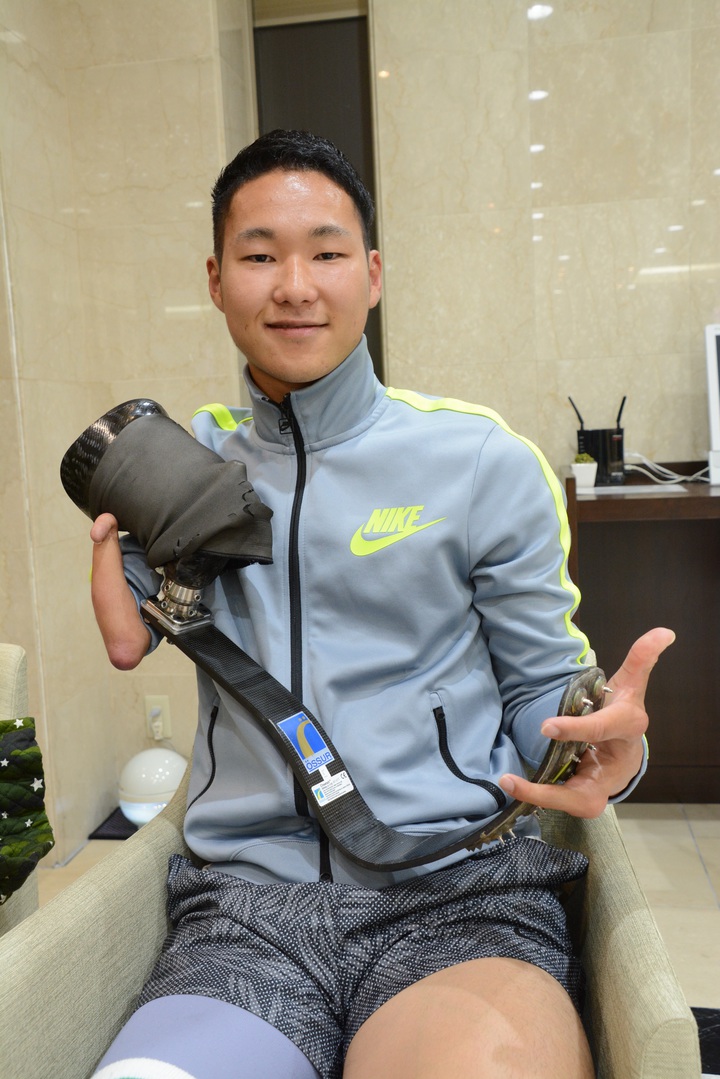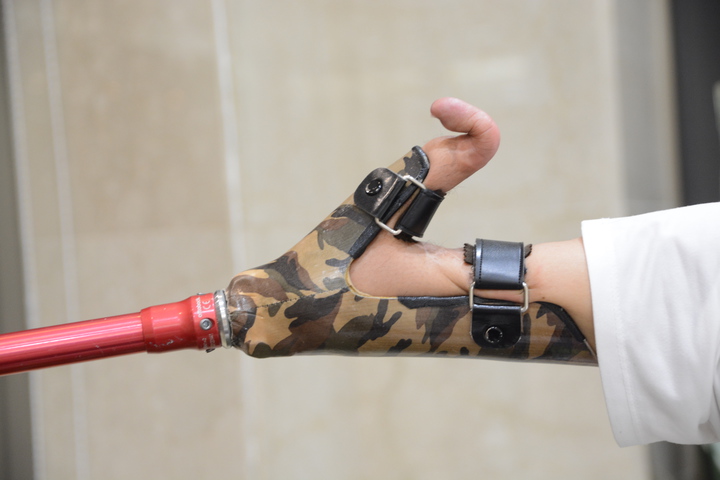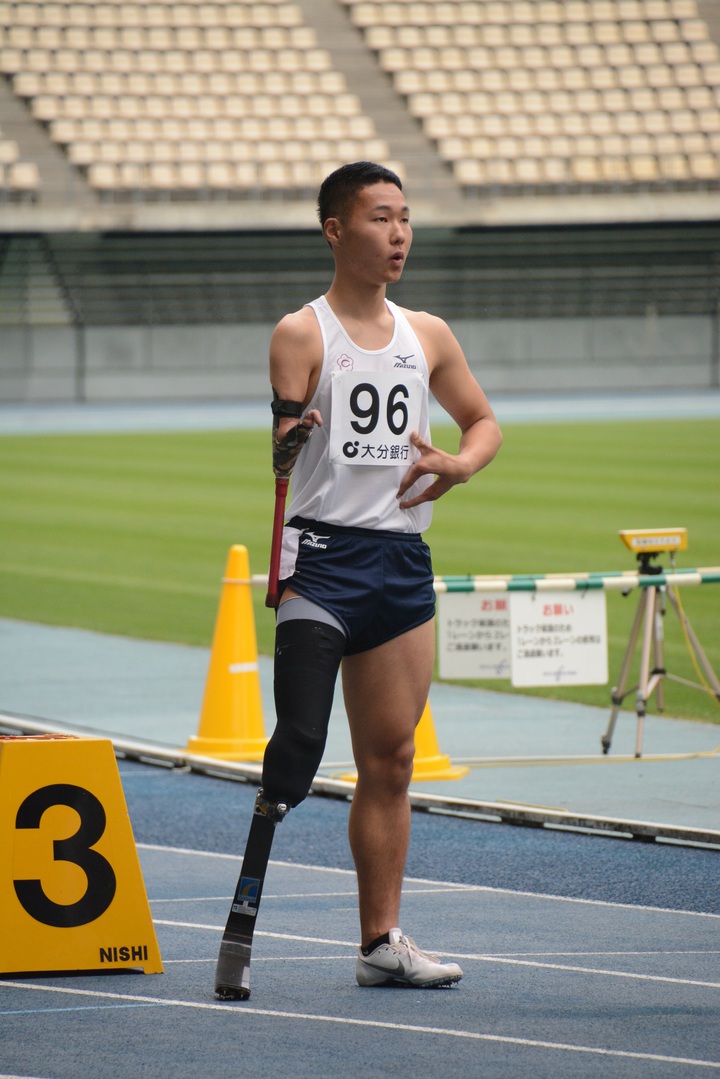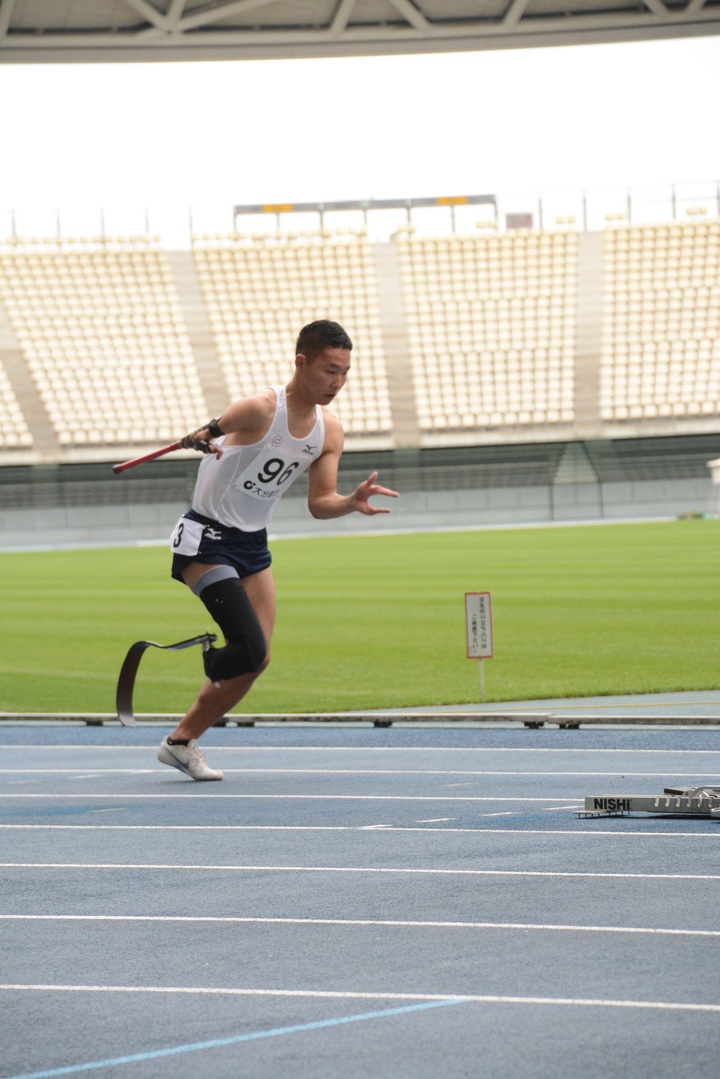University Student with Sights Set on 2020
2016.06.01
Ikeda Mikio already had his sights set on the Tokyo Paralympics in 2020 when TJF interviewed him as a third-year high school student in April 2014. Today Ikeda (20) is in his second year at Chukyo University's School of Health and Sport Sciences where he continues to pursue his dream while acquiring specialized knowledge.
What has changed most about Ikeda is his physique. In order to compete in the short-distance track and field events (100-meter, 200-meter, and 400-meter races), he realized the need to build up his body. After entering university he began focused weight training and put on about 3 kilograms. He worked especially hard to strengthen the musculature on the right side of his body to offset the disadvantages of his missing arm and lower leg.
Ikeda recognizes the tendency of his body to be heavier on the fully developed left side. "I have to build up muscles so I can use my prosthetic arm and leg properly. So I make a concerted effort to maintain right-left balance by building up the right side of my body. For example, when doing squats to build up my leg musculature, I use a chair for balance and do squats with only my right leg, putting no weight on my left leg."
In high school, Ikeda received advice from his track and field club advisor, but another big change in university is that he now creates his own training menus. He works into his training what he is learning about muscles and bones and their care in his classes along with advice and suggestions from his classmates.
Since entering university, Ikeda has begun using a prosthetic arm on the advice of his prosthetics maker. Since he began wearing it, his posture at the start of a race has changed. In high school, he had three points on the ground--left hand, left leg, and right leg prosthetic--but with the prosthetic arm, he can now make the start with a better-balanced four points on the ground. With his posture more stable, his starting dash has much improved.
Ikeda feels keenly the difference in the way he runs, depending on whether he is wearing the arm prosthetic or not.
When I was not wearing the arm prosthetic, it felt like I was running with my arm stuck in my pocket. With the prosthetic, I can distinctly feel the swing of my arm, and the swinging of my right arm has given my legs more freedom of movement.
■Championing Running with Prosthetics
When Ikeda first began practicing at university, classmates were often surprised at how smoothly he could run and approached him with new interest in the prosthetics he was wearing. "It seemed that when they saw me run, it overturned all their assumptions about prosthetic arms and legs. I'm glad if getting to know me helps people learn that we can run with prosthetic legs, and I'll do what I can to make it better known." He looks forward to getting to know all sorts of people at university.
Ikeda is cheerful and forward-looking, but his two years at university so far have not always been smooth. He has continually improved his own best times, but he was not chosen as a Japan representative in any of the major international meets for runners with disabilities like the Asian Para Games (Korea, 2014) or the IPC Athletics World Championships (Doha, Qatar, 2015).
Realizing that "my times have only improved a little, so despite the hopes of many people supporting me, I wasn't chosen to represent Japan," Ikeda keeps his sights set on the future. This year, with the planned Rio Paralympics as inspiration, he plans to study carefully where he can improve his performance and pour his energies into his training.
My Way Your Way
Ikeda Mikio, "Embracing Opportunity"
https://www.tjf.or.jp/clicknippon/en/mywayyourway/05/post-12.php
Interviewer: Kawahara Yukari
(障害者スポーツ情報サイト パラスポ!http://paraspo.info/ )



















